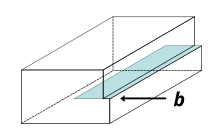User:Jcarroll/Dr. Edward Kramer
Title
Order and Disorder in
Abstract
Monolayer arrays of poly(styrene-b-2vinylpyridine)
Bio
Professor Kramer received a B.Ch.E. degree in Chemical Engineering from Cornell University in 1962 and his Ph.D. in Metallurgy and Materials Science from Carnegie-Mellon University in 1966.
He was a NATO Postdoctoral Fellow at Oxford with
Professor Kramer's current research activities focus on polymer deformation and fracture as well as the structure and properties of polymer surfaces and polymer interfaces using a variety of depth profiling, diffraction and microscopic imaging methods. His group is interested in the deformation of block copolymers from a micromechanical and molecular viewpoint, the kinetics of grafting reactions and instabilities at polymer melt interfaces and the ordering of block copolymer films as templated by interfacial interactions and external fields as well as their interactions with inorganic nanoparticles whose surfaces are coated with short polymer chains.
Professional Awards and Honors:
- Elected Fellow, American Physical Society (1983)
- Polymer Physics Prize of the American Physical Society (1985)
- Distinguished U.S. Alexander von Humboldt Stiftung(1987)
- Elected Guggenheim Fellow(1988)
- Elected Member, National Academy of Engineering (1989)
- Elected Fellow, American Association for the Advancement of Science (1994)
- Docteur honoris causa awarded by L’Ecole Polytechnique Fédérale de Lausanne (1995)
- Institute of Materials, UK (1996)
- Chaire-Paris Sciences (2000)
- Polymeer Technologie Nederland Medema Award (Dutch Polymer Society) (2007)
- American Chemical Society Polymer Materials: Science and Engineering, Cooperative Research Award (with D. Hucul, S. F. Hahn, G. H. Fredrickson and F. S. Bates) (2008).
Technical Advisory Boards:
- DSM
- Henkel
- Abbott Vascular
- Artificial MuscleInc.
- Solaria
Related Terms
Monolayer
A monolayer is a single, closely packed layer of atoms, molecules, or cells. [1]. A Langmuir monolayer or insoluble monolayer is a one-molecule thick insoluble layer of an organic material spread onto an
Dislocation
In materials science, a dislocation is a crystallographic defect, or irregularity, within a crystal structure. The presence of dislocations strongly influences many of the properties of materials. The theory was originally developed by Vito Volterra in 1905. Some types of dislocations can be visualised as being caused by the termination of a plane of atoms in the middle of a crystal. In such a case, the surrounding planes are not straight, but instead bend around the edge of the terminating plane so that the crystal structure is perfectly ordered on either side. The analogy with a stack of paper is apt: if a half a piece of paper is inserted in a stack of paper, the defect in the stack is only noticeable at the edge of the half sheet.
There are two primary types: edge dislocations and screw dislocations. Mixed dislocations are intermediate between these.

Mathematically, dislocations are a type of topological defect, sometimes called a soliton. The mathematical theory explains why dislocations behave as stable particles: they can be moved about, but maintain their identity as they move. Two dislocations of opposite orientation, when brought together, can cancel each other (this is the process of annihilation), but a single dislocation typically cannot "disappear" on its own.
